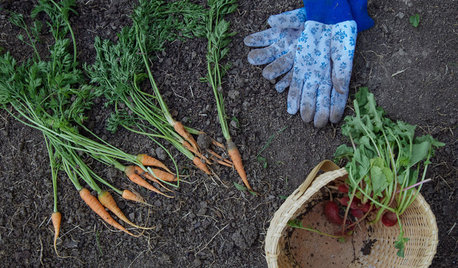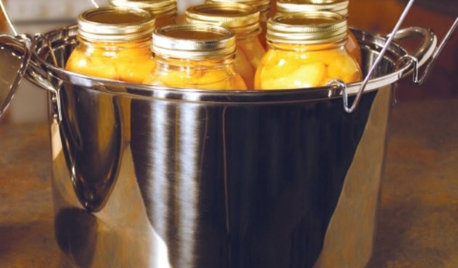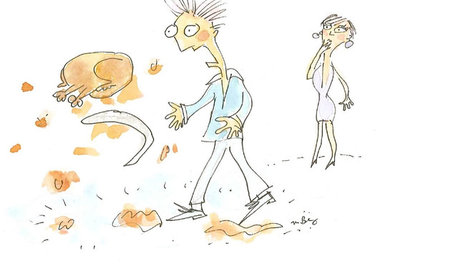Pickled beets, beans- without heat- safe??? Botulism?
angiepangie
10 years ago
Related Stories

MOST POPULARHow to Start a Cool-Season Vegetable Garden
Late summer and late winter are good times to plan and plant cool-season crops like salad greens, spinach, beets, carrots and peas
Full Story
GARDENING GUIDES10 Easy Edibles for First-Time Gardeners
Focus on these beginner-friendly vegetables, herbs, beans and salad greens to start a home farm with little fuss
Full Story
FARM YOUR YARDMy Houzz: Backyard Farming for a Kansas City Family
A backyard garden provides a family of 5 with organic seasonal produce. Here's how they do it
Full Story
FEEL-GOOD HOMESimple Pleasures: Make Do and Mend
Experience the satisfaction of fixing, repurposing and creating things yourself around the home
Full Story
PRODUCT PICKSGuest Picks: Canning, Preserving, Steaming, Dehydrating
20 products to help make fall produce last through the season and beyond
Full Story
SUMMER FRUITS AND VEGETABLESHow to Grow Your Own Fresh, Sweet Corn
Here's how to plant and care for your own mini cornfield
Full Story
MOST POPULAR9 Real Ways You Can Help After a House Fire
Suggestions from someone who lost her home to fire — and experienced the staggering generosity of community
Full Story
FEEL-GOOD HOME21 Ways to Waste Less at Home
Whether it's herbs rotting in the fridge or clothes that never get worn, most of us waste too much. Here are ways to make a change
Full Story
KITCHEN DESIGNTrending Now: 25 Kitchen Photos Houzzers Can’t Get Enough Of
Use the kitchens that have been added to the most ideabooks in the last few months to inspire your dream project
Full Story
MOST POPULARThanksgiving Tales: When the Turkey Tanks
Houzz readers prove adept at snatching victory from the jaws of entertaining defeat
Full StoryMore Discussions






digdirt2
angiepangieOriginal Author
Related Professionals
Maple Valley Landscape Architects & Landscape Designers · Deer Park Landscape Architects & Landscape Designers · Leawood Landscape Architects & Landscape Designers · Sand Springs Landscape Architects & Landscape Designers · Westwood Landscape Contractors · Wilmington Landscape Contractors · Annandale Landscape Contractors · Deerfield Landscape Contractors · Palm Beach Gardens Landscape Contractors · Greenfield Landscape Contractors · Boone Roofing & Gutters · Holland Roofing & Gutters · Marlboro Roofing & Gutters · Murray Roofing & Gutters · Round Lake Beach Driveway Installation & MaintenanceangiepangieOriginal Author
myfamilysfarm
sidhartha0209
malna
digdirt2
sidhartha0209
digdirt2
sidhartha0209
malna
sidhartha0209
sidhartha0209
NilaJones
digdirt2
sidhartha0209
sidhartha0209